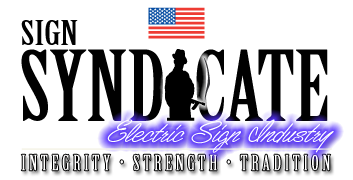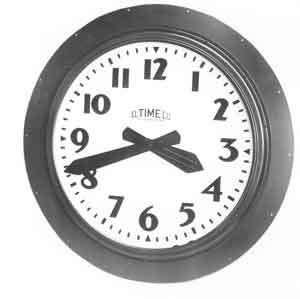
thomaserb
Board Member-
Posts
97 -
Joined
-
Last visited
About thomaserb
- Birthday 03/13/1918
Contact Methods
- Website URL
-
ICQ
0
Profile Information
-
Name
Tom
-
Company
Electric Time Company
-
Job Title
CEO
-
City & State
Medfield,MA USA
-
Gender
Male
Previous Fields
-
Company Type
Component Manufacturer
Quick Company Info
-
Address
97 West
thomaserb's Achievements

Apprentice (3/6)
2
Reputation
-
The BrightON Ruby Red vs Principal LED Qwik Mod Red ShootOut
thomaserb replied to Erik Sine's topic in General Message Board
I've not noticed an appreciable difference with constant voltage LED modules - also if you break the modules into parallel segments you can minimize the voltage drop - you are also dealing with I**2R (V*I) losses and you will lose 1/2 as much power with a 24VDC system.- 2 replies
-
- principal led
- brighton led
-
(and 2 more)
Tagged with:
-
my 30-year-old ESAB is still running, but on control #3 - and we mostly use our waterjet.
-
Constant Current and Constant Voltage LED Differences
thomaserb replied to Erik Sine's topic in General Message Board
Thanks for the video - so essentially a constant voltage LED module has an on-board switching regulator ? And if you just powered the constant voltage LED with your power supply - you would see the current go up when the voltage went down.- 6 replies
-
- Constant Voltage
- Constant Current
-
(and 1 more)
Tagged with:
-
A four hole mount might be a Hansen movement - available here http://www.american-time.com/products-by-family/clock-parts-and-repairs/motors-movements/synchron-type-c-electric-movements if the clock was any larger - my firm www.electrictime.com which makes larger clocks could help you. You may also want to try the NAWCC forum http://mb.nawcc.org/forumdisplay.php?20-Electric-Horology My suspicion is someone stuck a clock movement from an imported UK clock - on this US clock and even if you used a step up transformer - it wouldn't work - the clock would run 6/5 (60HZ/50HZ) fast. BTW - if you intend to throw out the clock movement - I would take it (and pay for shipping).
-
If the nameplate is correct - the clock won't work in the USA - 220Volts - 50HZ is not the power standard in the USA. I would assume the same about the neon transformer - clock must have been made for export. Reading a little about the "Bichronous motor" looks like it was made in around the time of the depression.
-
Not to get into the UL/MET/ETL debate - but "CE" is not a valid listing in the USA. It is a self-certified European standard, Electrical Inspectors (and you) should not accept it.
-
Typically when something is attached to building you cannot remove it.
-
I need (8) GEWWB1P2 – Tetra Edgestrip 3200K - must be this exact color temperature and part number. I'm hoping someone has an open box. .
-
With a plastic case around it - not a bad idea :) Just 6500K (a bit too blue) but other color temperatures on the way.
-
In the first photograph, is he typing off the ladder - or holding on for dear life.
-
"only 5 people post" - a challenge
thomaserb replied to manuellynch's topic in General Message Board
I'm here from Boston Massachusetts. BTW, the Ballast and Lamp manufacturers pay attention to this board. Post something and you will get a call. -
Just ran the figures on a installation, using LEDs vs HO lamps - found aprox 58% energy savings. BUT Neon would be very close to the LED energy use and would last longer. I think most LED's are rated at 50K hours - I find neon can go 100K+ BTW, we have found with B/W acrylic it's best to use lighting that is more on the "Blue" side.
-
I assumed (maybe wrongly) that the ban applied to both neon and fluorescent ballasts. The same problem is true with reliablity on electronic ballasts for fluorescent lamps. I basically think all electronic transformers ##$##$$. The main difference between the electronic fluorescent ballast and neon transformers for this case is that the fluorescent ballast is normally contained within the sign cabinet with the wires being run in a raceway. Usually the wire that is already connected to the ballast is all that is needed in the cabinet to wire the lamps. The raceways are also just a touch larger than 1/2" conduit used with neon installations. Neon transformers are usually remote from the neon so the GTO has to be run in conduit which really causes trouble at high frequency. Even if the power supply is in a raceway behind the letters...the GTO, electrode or something still has to pass through a metal wall unless the sign is made entirely of plastic. Electronic power supplies do have different rules and sometimes I even think they twist the rules of physics. Whenever we can we use neon transformers with the neon electrode housing potted in. The electronic transformers can be picky in applications for both neon and fluorescent lighting. In the sign industry the electronic transformers are not a mature product, there needs to be a few more iterations in design. Reminds me of the first few years after the low flush toilets were required. The photograph below is of the clock in our shop - installed about 1950's +- it has the same neon tube same transformer (core and coil) - the neon tube wasn't put on stand-offs - the tube was re-gassed in the 1980's but it's still working 60 years later.
-
I assumed (maybe wrongly) that the ban applied to both neon and fluorescent ballasts. The same problem is true with reliablity on electronic ballasts for fluorescent lamps. I basically think all electronic transformers ##$##$$.


